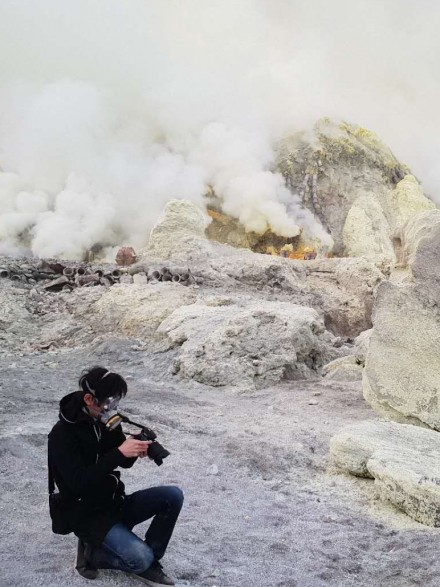Siyuan Zhao

Contacts
Siyuan Zhao is a PhD Candidate whose work focuses on using geodetic techniques (e.g., InSAR and GPS) to investigate the crustal deformation caused by earthquakes, volcano activities, or hydrological effects spatially and temporally.
Academic qualifications
PhD Candidate Australian National University
M.Sc. (advanced) With Commendation Australian National University, Dec 2018
B.Sc. (Hons) University of Adelaide, Dec 2016
Employment history
2022-
Research Assistant
Research School of Earth Sciences
Australian National University
2022-2023
Student Administration Officer (casual)
Research School of Earth Sciences
Australian National University
2016-2017
Intern geophysicist
Santos Ltd., Adelaide, Australia
Awards and distinctions
Best Student Poster Award, the 20th Annual Meeting of Asia and Oceania Geosciences Society (AOGS 2023).
Mervyn & Katalin Paterson Travel Fellowship (2023)
Internship scholarship, Australian School of Petroleum, the University of Adelaide (2016)
Research interests
Currently, Siyuan's research involves:
1. Generating a broad-scale kinematic model for the Australia-Indonasia-New Guinea collision zone using GPS and earhquake slip vectors.
2. Investigating the coseismic and post-seismic deformation caused by 2018 Lombok earthquake sequence based on InSAR and seismic datasets.
3. Understanding the influence of 2018 Lombok earthquake sequence on the unrest Rinjani-Samlas volcanic system by modelling the time-dependent volcano pressure source and analysing the inflation/deflation rate of the volcano edifice in different periods.
4. Spatiotemporal monitoring of groundwater resources based on InSAR deformation and groundwater level measurements.
5. Investigate the coupling distribution along the Java-Timor subduction-collision transition zone.
6. Investigate the relative age of the structures within the Papua New Guinea Fold-Thrust Belt based on the morphtectonic indicators and satellite imagery.
Groups
- Student, Environmental Geodesy
Ollarves, R., Zhao, S. and Gilby, F., (2020), Interaction between the folded structures of the Western Papua New Guinea Highlands: an example of how surface observations can assist in subsurface understanding. Geological Society, London, Special Publications, 490(1), pp.311-327. (DOI:10.1144/sp490-2018-124).
Cummins, P. R., Pranantyo, I. R., Pownall, J. M., Griffin, J. D., Meilano, I., & Zhao, S. (2020). Earthquakes and tsunamis caused by low-angle normal faulting in the Banda Sea, Indonesia. Nature Geoscience, 13(4), 312-318 (DOI:10.1038/s41561-020-0545-x).
Zhao, S., McClusky, S., Cummins, P.R., Miller., S.M., Nugroho, H. (2023). New insights into crustal deformation of the Indonesia-Australia-New Guinea collision zone from a broad-scale synthetic kinematic model. Journal of Geophysical Research: Solid Earth (DOI: 10.1029/2022JB024810).
Siyuan Zhao, Simon McClusky, Phil Cummins, Meghan Miller (2024), Co-seismic and Post-seismic Deformation Associated with the 2018 Lombok, Indonesia, Earthquake Sequence, Inferred from InSAR and Seismic Data Analysis. Remote Sensing of Environment (DOI: 10.1016/j.rse.2024.114063).
Siyuan Zhao, Simon McClusky, Phil Cummins, Meghan Miller (2023), Distribution of Interseismic Coupling Along the Java-Timor Subduction-Collision Transition Zone at East Indonesia, Geophysical Research Letters (In revision)
Siyuan Zhao, Simon McClusky, Meghan Miller, Phil Cummins, The impact of the 2018 Lombok earthquake sequence, Indonesia on the unrest Rinjani - Samalas volcanic complex inferred from time-dependent volcanic source models (In Prep.).









